Bridging the Data Gap Between Health Care and Social Services
DASH Project Spotlight: Maine Data Across Sectors for Health (DASH)
Lead agency: HealthInfoNet
Partners/collaborators: Seven federally qualified health centers, three critical access hospitals, and two community action agencies
The challenge
In Maine, people living in isolated rural areas often face barriers to getting the care they need. Many lack adequate transportation to medical appointments or are forced to make difficult choices between paying for health care and other basic needs like food and rent. Health care providers in these areas recognize that they cannot meet their patients’ medical needs without first addressing their broader social needs.
To provide more holistic care, clinical and social service providers need a coordinated data system; one that can illuminate the broader circumstances in which people live and, thereby, help them fill care management gaps for the people they serve. Katie Sendze, Director of Client Services at HealthInfoNet, Maine’s health information exchange (HIE), explained:
“Having a way to know who outside of your organization is taking care of the patient at the community level is really helpful to having a more efficient care plan and getting a patient’s social needs met.”
The opportunity
Through Data Across Sectors for Health (DASH), HealthInfoNet is creating a care management system that integrates health care and social services data to help providers better understand the needs of patients and support them in maintaining their health and well-being. HealthInfoNet is leveraging the state HIE to integrate electronic health record (EHR) data from three critical access hospitals and seven federally qualified health centers with data on social factors like housing, medical transportation, and child services from two community action agencies.
Once organizations are connected to the state HIE, care managers will be able leverage HealthInfoNet’s predictive analytics system to identify the most complex, high-need patients and intervene appropriately. Sendze commented:
“It’s really about helping the staff know how to spend their very limited time most valuably. If you only have one nurse across 40,000 lives, you want that nurse to be spending their time on the patients that are most at risk for poor outcomes. By getting these federally qualified health centers and hospitals connected to the HIE, we can implement our analytics services and they can focus their care management staff very pointedly on the sickest population.”
Data on social factors helps primary care providers prioritize high-need patients and connect them with community services that can prevent further medical complications. Increased referrals from providers also benefit community action agencies, as they can grow their funding base and expand services.
Engaging sectors to work together
Several providers in Maine are invested in building a collaborative culture that encourages data sharing to improve care coordination for their patients. HealthInfoNet, as the statewide HIE, began cultivating data sharing relationships with most of the health care partners involved in the project long before the inception of DASH.
Members of the Community Care Partnership of Maine (CCPM), an Accountable Care Organization (ACO), have been working collaboratively since 2015 to transform health care delivery in Maine through meaningful information sharing and accountability for their patients.
Community action agencies and health care organizations involved in the DASH project were already members of the ACO, providing an ideal collaborative backbone for this work. The DASH grant has allowed CCPM to invest in the technology infrastructure needed to better coordinate care. Sendze explained that this strong network of partners took several years to build and has helped to create a sustainable environment for data sharing. She noted:
“Building the foundation of consent, relationships, and buy-in can take years. Don’t underestimate how long it takes to get your relationships in place to do the work…The fact that we had very specific partners and set very specific goals is one of the reasons we’re making progress as expected.”
CCPM member organizations have expressed strong support for building a community-based approach to a continuum of care with greater connectivity to all providers, regardless of the setting of care. HealthInfoNet meets with partners regularly to determine the most useful datasets for integration within the HIE and explore mechanisms for collecting these data in a standardized way across provider settings.
Looking to the future
HealthInfoNet’s DASH project will make it possible for providers in Maine’s newly formed ACO to use the HIE and predictive modeling to achieve the best possible outcomes (both health and social) for their patients. Often neglected rural hospitals and federally qualified health centers will have the tools needed to prevent emergency department visits/hospitalizations and provide more focused, holistic care. The cost savings generated by improving patient outcomes through predictive modeling will also help sustain the partnership going forward.
As this new process for integrating health and social services data in Maine’s HIE is developed, it can be expanded to more organizations and replicated in other underserved communities. Sendze commented:
“If we can duplicate this process across additional providers, if we can create a system that works for prioritizing care management services to take care of our sickest patients and bend the cost curve, over time it can become a strategy that all providers in Maine can take advantage of.”
With a strong community focus and a collaborative spirit, this data-driven group of ACO providers is developing the tools to cultivate healthy and vibrant communities across Maine for years to come.
Learn more
Watch this video to learn more about HealthInfoNet’s HIE and analytics services.

